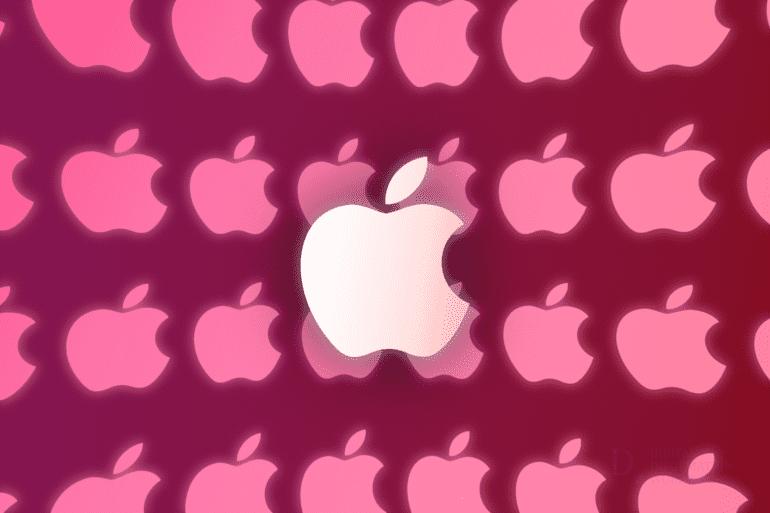TL;DR:
- Since 2015, Apple has acquired over two dozen AI companies, integrating their technologies into its products.
- Apple keeps its AI initiatives low-key, unlike competitors like Microsoft, Google, Meta, and Amazon.
- Apple focuses on strengthening machine learning infrastructure rather than standalone generative AI models.
- CEO Tim Cook acknowledges AI’s core role in product development but maintains a discreet approach.
- Recent iPhone and Apple Watch models showcase Apple’s AI capabilities.
- Despite criticism, Apple’s strong ecosystem and user base give it a unique position.
- Analysts anticipate the introduction of an “AI App Store” as part of Apple’s AI strategy.
- Apple’s commitment to data privacy and design excellence may affect the pace of AI deployment.
- Apple is expected to continue investing in AI through acquisitions and partnerships.
Main AI News:
In the ever-evolving landscape of artificial intelligence (AI), Apple has quietly been making strategic moves that differentiate it from its big tech rivals like Microsoft, Google, Meta (formerly Facebook), and Amazon. Since 2015, Apple has stealthily acquired more than two dozen AI companies, most of which aren’t household names but have contributed significantly to the company’s product offerings. These acquisitions have been integrated into Apple’s range of products, including iPhones, Macs, Apple Watches, streaming services, and the upcoming Vision Pro mixed-reality headset slated for release next year.
However, Apple’s approach to AI stands in stark contrast to its competitors’ loud and publicized AI initiatives. Cupertino-based Apple is known for its discretion when it comes to discussing AI acquisitions and its overall strategy in the AI field. While tech giants like Microsoft, Google, Meta, and Amazon eagerly promote their generative AI chatbots and large language model (LLM) platforms, Apple remains tight-lipped.
As Dan Ives, an analyst at Wedbush Securities, points out, “That’s the DNA of Cook and Cupertino. They tend not to talk until they release.” This secrecy is just one aspect that distinguishes Apple’s AI approach from its competitors and shapes the future of its consumer-focused business model.
While other tech companies are busy developing standalone generative AI models, Apple’s strategy is focused on strengthening its machine learning infrastructure. According to Brendan Burke, an analyst at PitchBook, Apple prioritizes acquiring talented teams in specific domains that can bring machine-learning techniques to consumer products. This strategy emphasizes consumer applications of AI, operational techniques for machine learning deployment, and edge devices, with some investments in deep learning and horizontal technologies.
Apple rarely discusses its AI ambitions in detail, but CEO Tim Cook has acknowledged the importance of AI and machine learning in their product development. Cook stated, “We view AI and machine learning as core, fundamental technologies that are integral to virtually every product that we build.” However, Apple prefers to announce developments as they are ready for the market, maintaining its characteristic discretion.
The latest iPhone and Apple Watch models exemplify Apple’s AI capabilities, featuring innovations such as personalized voice synthesis, live voicemail transcription, improved camera capabilities, and AI integration into the double-tap feature of the Apple Watch. Additionally, the Vision Pro mixed-reality headset will incorporate AI, allowing users to create avatars and engage in various activities together.
Despite these advancements, Apple has faced criticism for being late to the generative AI game. Laura Martin, a tech analyst at Needham, believes that Apple lags behind its competitors in this regard. However, she acknowledges that Apple’s ecosystem and economic model are strong, geared toward machine learning, and poised for growth.
One significant advantage Apple holds over its rivals is its highly monetized user base, with over two billion users running iOS on Apple devices. This vast user base sets Apple apart and influences how analysts view its competition in the AI space.
Analysts believe that Apple’s foray into AI will not follow a conventional path. Instead, it may lead to the introduction of an “AI App Store” in the near future, leveraging its substantial investment in AI research and development, estimated to be as high as $10 billion in recent years. This move aligns with Apple’s services business, which has become a $100 billion revenue stream, providing opportunities beyond core offerings like Apple Music, extending to health and fitness apps.
Apple’s interest in generative AI was highlighted when CEO Tim Cook mentioned it in an earnings call, fueling speculation about the company’s plans in this competitive field. Reports suggest that Apple is working on its own large language model (LLM), named Ajax, and has developed an internal chatbot, Apple GPT.
While Apple’s commitment to data privacy and design excellence may slow down its AI deployment, it ensures that any products released are safe and privacy-focused. This cautious approach aligns with Apple’s commitment to maintaining high internal quality standards.
In the meantime, Apple is expected to continue investing in AI through acquisitions, partnerships, and collaborations. Competitors’ moves, such as Amazon’s investment in Anthropic, a startup with an AI chatbot, could prompt Apple to seek similar partnerships to supplement its internal R&D efforts. As startups continue to make strides in AI research and development, Apple may explore collaborations to stay at the forefront of AI innovation.
Conclusion:
Apple’s distinctive AI strategy, emphasizing machine learning infrastructure and maintaining secrecy, positions it uniquely in the market. While competitors race to develop generative AI models, Apple’s ecosystem and potential “AI App Store” could reshape the AI landscape, making it a formidable player in the future. However, its commitment to data privacy and quality standards may lead to a more cautious approach.

